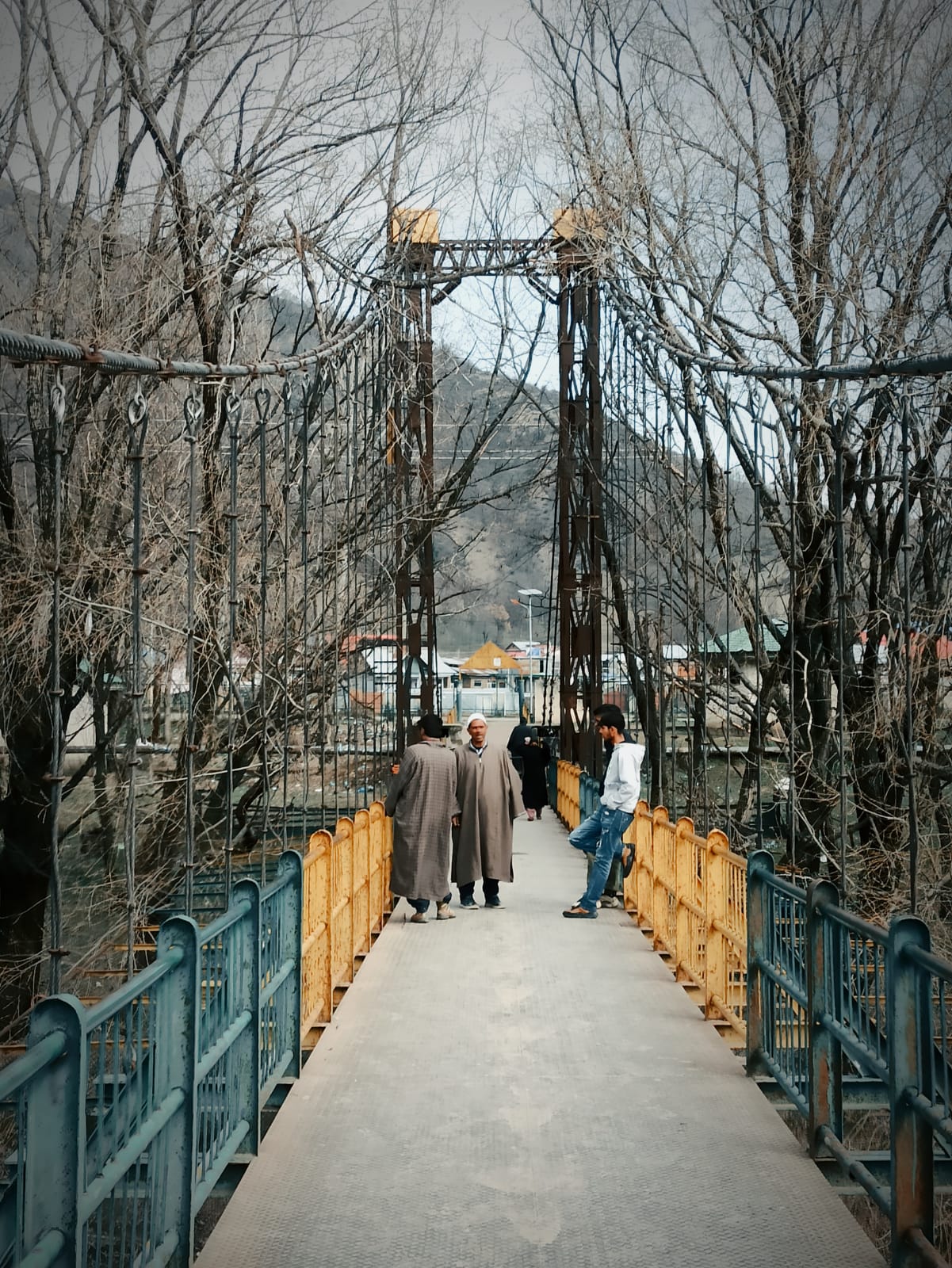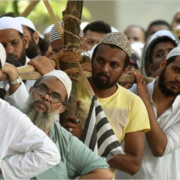Pakistan’s Social Media Disinformation Blitz: Orchestrated Propaganda Seeks to Twist Kashmir Narrative Amid Pahalgam Tragedy

Pakistan is deftly orchestrating a sophisticated disinformation campaign aimed at manipulating the narrative surrounding Kashmir through an expansive network of social media operatives.
Swift Disinformation Strategy Unleashed On Kashmir’s Social Media
In the wake of the Pahalgam tragedy, videos that bear no connection to the incident have swiftly been pushed into Kashmir’s social media. These videos resurrect past incidents to fuel anti-India propaganda. They are putting the spotlight on the alleged fake encounters in Hyderpora, Sopore and Sumbal.
Kashmir watchers know that this is a disinformation strategy. When the entire Kashmir is engulfed in grief over the Pahalgam killings, these videos and images are twisting facts to fit a manufactured narrative. The act is deliberate and reflects a clear intent to deflect the hurt and anger against Pakistan.
The handlers behind these campaigns are not seeking justice; they are waging an information war. Their sole objective is to inflame hatred, provoke unrest, and poison young minds in the Valley. By recycling old allegations of fake encounters, they aim to destabilize the region and undermine India’s hard-earned peace efforts.
By disseminating these carefully constructed deceptions, Pakistan seeks to tarnish India’s reputation globally and cast itself as a victim of aggression to obscure its own destabilizing role in the ongoing conflict. The disinformation campaign is a calculated effort to manipulate the emotions of those on the ground, creating an atmosphere where truth may be obscured by fabricated campaigns, and public sentiment is molded to fit a particular narrative.
Social Media Accounts Activated to Spur Disinformation
Numerous social media accounts have been activated to share misleading and incendiary content designed to advance this agenda. Some of the links are provided below:
| Link | Social Media Platform | Account/User Name |
| X | X | nooonchai |
| X | X | cagedwolfffx |
| Unknown (Reel Link) | ||
| Unknown (Reel Link) | ||
| Unknown (Reel Link) | ||
| Unknown (Reel Link) |
Upon closer examination of these accounts, it becomes clear that Pakistan is attempting to fabricate a narrative that absolves itself of any responsibility for the ongoing terrorism in the region. Instead, it seeks to paint India as the aggressor and present itself as the innocent victim in a conflict that it has fuelled. The manipulation of visuals and selective content is intended to stir up anti-India sentiment, while simultaneously concealing Pakistan’s active role in perpetuating violence and instability within Kashmir. This deliberate disinformation campaign is a calculated effort to distort the narrative, sway public opinion, and perpetuate the myth of Pakistan as a mere casualty in the Kashmir dispute. Through the disinformation campaign, Pakistan seeks to obscure from global view its role in fostering terrorism.
In the last few years, the battlefield is not just the rugged cliffs of disputed borders. Equally, it is the fevered timelines of X, Facebook, Instagram, and YouTube. Pakistan’s disinformation warfare has matured with terrifying sophistication, operating multiple fronts simultaneously through social media handles designed for precision narrative strikes. Among the most notable accounts are as follows:
| X Handle | Purpose |
| @KashmirNarratives | Amplifying Kashmir-related propaganda |
| @VoiceOfKashmiris | Humanizing separatist narratives |
These and other accounts have become the pawns and rooks in a new, hyper-modern chess board where reality is a matter of narrative volume rather than empirical evidence. One does not need to search far to witness the most virulent outbreak of this phenomenon.
Weaponizing Propaganda, Making It State Doctrine
In August 2023, there was a tragic bus accident near Pahalgam in which several civilians lost their lives. Soon after, Pakistan’s digital foot soldiers launched a meticulously orchestrated campaign on X. Within hours, hashtags like the following dominated the trend lists:
| Hashtag | Narrative Pushed |
| #PahalgamMassacre | Content on this hashtag framed the accident as deliberate Indian brutality |
| #IndianBrutality | General anti-India sentiment |
| #KashmirBleeds | Emotional mobilization around Kashmir |
| #FreeKashmir | Political call for secession |
Fictitious videos, old footage from Syria and Palestine repurposed with fresh, heart-wrenching captions, flooded the platforms. Carefully constructed fake profiles, many displaying photos stolen from random users or generated through AI, relentlessly pushed the narrative of a “deliberate genocide” by Indian forces.
German philosopher Friedrich Nietzsche once said, “There are no facts, only interpretations.” Pakistan’s strategists seem to have weaponized this observation into a state doctrine. What matters is not the authenticity of the event but the force of the retelling.
Social media, inherently ephemeral and outrage-driven, proves the perfect arena. Algorithms reward engagement, not truth. By the time fact-checkers debunked the manipulated images and videos of the accident at Pahalgam, the emotional imprint had already been burned into thousands of minds worldwide. Truth drowned quietly, while the lie screamed itself hoarse.
Locals Confused By Distorted Accounts
When one peels back the layers of synthetic fury, one finds that local narratives tell a very different story. Amir, a shopkeeper in Pahalgam, told a visiting journalist: “There was no firing, no crackdown. It was a terrible accident. Even the army helped in pulling people out of the river. I saw it with my own eyes.” His testimony, like that of dozens of others, was muted, buried under a deluge of orchestrated outrage from accounts that had never set foot in Kashmir.
This strategy of manufacturing perception over reality is not unique to Pakistan, but its scale and audacity are unmatched. Plato’s allegory of the cave comes to mind—citizens of the world chained inside a dark cave, seeing only shadows projected on a wall, mistaking them for reality. Pakistan’s sochcial media operatives have perfected the art of shadow-play, ensuring that their preferred images are what the chained audiences see, regardless of the sunlit facts outside the cave.
Organized, State-Sponsored Manipulation By Enemy Nation
While Islamabad’s official machinery maintains a veneer of plausible deniability, insiders reveal a different picture. Anonymous former ISPR (Inter-Services Public Relations) employees have admitted that thousands of accounts are managed directly by military cyber units, coordinated through war rooms in Rawalpindi. There are reports of similar cyber units and so-called media units set up by Pakistan in affluent foreign nations to carry forward the disinformation targeted against India.
Sophisticated bots, fake news farms, and psychological operations tactics blend into an intoxicating brew of controlled chaos. This is not the anarchy of spontaneous digital discourse—it is organized, state-sponsored manipulation. During the campaign unleashed after the road accident in Pahalgam in 2024, one could observe unusual phenomena.
Twitter handles created only weeks before the incident, with usernames like @KashmirFreedom92 and @VoiceForUmmah, suddenly became extraordinarily active, posting hundreds of tweets a day, tagging international human rights organizations, and flooding replies to Indian government officials with graphic, often doctored imagery. Many tweets carried identical text, suggesting centralized scripting.
Plato had warned that those who control the telling of stories control society. Pakistan’s handlers seem to understand this better than most democratically elected governments.
The consequences of Pakistan’s social media propaganda are not confined to fleeting outrage or trending hashtags. They harden international perceptions, polarize communities, fuel sectarian and nationalist fires, and ultimately create an environment where genuine dialogue becomes impossible
It was not merely X. Instagram saw a surge of “activist” pages that bore names like @FreeKashmirNow and @ResistanceKashmir. Their aesthetic was slick—professional graphic design featuring weeping mothers, shattered mosques, smoldering ruins. Emotional saturation, not veracity, was the goal.
Even YouTube was weaponized. Newly created channels uploaded slickly produced “news reports” from so-called “citizen journalists,” complete with fabricated testimonials and dramatic background music. An old farmer named Bashir, whose home lies close to where the Pahalgam road accident occurred, recounted the moment with weary bitterness: “My son asked me, ‘Abba, why is the world calling us dead when we are alive?’” His voice cracked with a mixture of rage and resignation. In that simple question lies the tragedy of an entire region: the lived reality of its people is hijacked, distorted beyond recognition by those who have never seen the valley’s mist curl over Pahalgam’s Lidder River.
Totalitarianism: The Erasure Of The Boundary Between Fact And Fiction
American political philosopher Hannah Arendt once described totalitarianism as the erasure of the boundary between fact and fiction, between the real and the imaginary. In Pakistan’s social media campaign, one sees chilling parallels. The objective is not merely to mislead but to annihilate consensus reality altogether.
If truth becomes merely one opinion among many, if every event can have infinite interpretations, then the most organized liar wins. The digital footprint of the Pahalgam misinformation campaign further reveals international collaboration. Investigations traced several viral tweets to Pakistan-origin networks operating from Doha, London, and Kuala Lumpur.
Accounts tied to groups like Friends of Kashmir International, supposedly grassroots organizations, were often directly linked to the ISI through layers of intermediaries. Italian philosopher Machiavelli wrote that leaders must be “foxes to recognize traps and lions to frighten wolves.” Pakistan’s information warlords embody the fox’s cunning perfectly, spinning webs so fine that even seasoned journalists have occasionally faltered.
The tragedy is deepened by the complicity of global audiences who are either too distracted or too ideologically invested to question the orchestrated spectacle. In a time when a fifteen-second video can shape global outrage, the slow, painful process of verifying facts becomes almost quaint. Socrates, the gadfly of Athens, insisted on asking uncomfortable questions in pursuit of truth. Were he alive today, he would be drowned out by hashtags, ratioed into oblivion by bots.
Kashmiri Youths Are Pushing Back, Telling Their Own Stories
But not all is dark. An underground network of local Kashmiri bloggers and citizen reporters has begun pushing back, painstakingly documenting the discrepancy between viral narratives and ground realities. Pages like RealKashmirVoices and independent YouTubers armed only with smartphones and battered courage have started to reclaim their own stories. Their audiences are still modest, their reach still dwarfed by Pakistan’s well-oiled machine.
But as Italian philosopher and politician Antonio Gramsci wrote, “The old world is dying, and the new world struggles to be born: now is the time of monsters.” Against the monstrous falsehoods, small lights flicker stubbornly.
How Lies Impact Vulnerable Youths
The consequences of Pakistan’s social media propaganda are not confined to fleeting outrage or trending hashtags. They harden international perceptions, polarize communities, fuel sectarian and nationalist fires, and ultimately create an environment where genuine dialogue becomes impossible. A generation raised on these curated fictions will see peace not as a goal, but as betrayal; negotiations not as necessary, but as defeat.
In this digital labyrinth, even hope risks becoming a mirage. The people of Pahalgam, and indeed Kashmir as a whole, are not props for distant geopolitical games. They are human beings with dreams, griefs, mundane joys, and unbearable losses. When their reality is weaponized by foreign powers, their suffering is compounded, made grotesque and unrecognizable even to themselves.
Disinformation Seeks to Erase Reality, But Truth Endures
Pakistan’s social media campaigns do not merely tell lies. They are part of a deeper violence—the erasure of memory, the colonization of grief, the transformation of genuine tragedy into spectacle. They achieve not just the distortion of the present, but the disfigurement of history itself.
Pakistan has long worn the crown of duplicity with a surprising lack of shame. From the earliest years of its creation, the nation built an edifice on tales that suited its strategic imperatives rather than the stubborn weight of truth. History is littered with instances where reality was twisted, reimagined, or simply obliterated. The 1965 war was loudly proclaimed as a victory when in fact it ended in strategic stalemate. Kargil was painted as an insurgency rather than an act of state aggression. Lies were not seen as mere aberrations but baptized into the bloodstream of the national consciousness. In this hall of mirrors, the emergence of Pakistan’s modern social media campaign as a ruthless propaganda hub is not an anomaly—it is a grotesque evolution.
Like a vast factory of illusions, Pakistan’s digital empire pumps out narrative after narrative, confident that somewhere, someone will believe the next fabrication, and the next, and the next. Yet truth, though battered and bruised, has a way of enduring. It whispers in the testimonies of the forgotten villagers, flickers in the blogs of courageous locals, and hides in the grainy footage of honest witnesses. It waits, patient as stone, for those willing to look beyond the shadows on the wall. And in the end, the wall always cracks.
Dr Syed Eesar Mehdi is a Research Fellow at International Centre for Peace Studies, New Delhi, India. The views expressed here are his own. He can be reached @ eesar.mehdi@gmail.com
Got a fresh perspective? C-KAR invites original articles and opinion pieces that haven’t been published elsewhere. Send your submissions to deputydirector@c-kar.com





